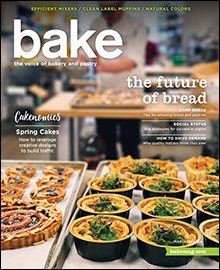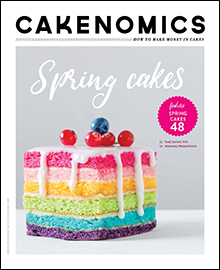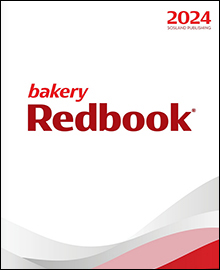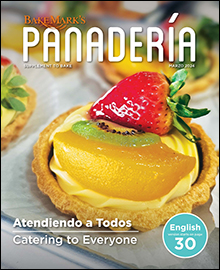Companies have more direct access to consumers than ever before, with the ability to pop up on their social media feeds all hours of the day and even leave comments on their personal posts.
Since the rise of social media — and the first time fast food chains Wendy’s and Burger King went viral for “roasting” each other on Twitter in January 2016 — brands have been trying to figure out what their relationships with consumers should look like in a digital age. Many brands have taken the Wendy’s/Burger King approach, leaning into an online persona that tries to be one with consumers, showing the human behind the computer, who is in on all the memes.
This style of digital marketing became so popular in 2024 that social media users began joking about the Gen Z intern they assumed to be behind a brand’s social media account. This led to a trend of companies comedically highlighting the work their supposed Gen Z interns did. However, many Gen Zers were quick to call out companies with posts that were too polished and clearly made by a marketing team.
This faux-authentic style of digital marketing can have mixed results, depending on the brand and its intended audience. For products aimed at younger demographics, a brand fully “committing to the bit” can land well. An example of this would be the Sour Patch Kids TikTok account (@TheRealSourPatchKids), which posts content targeted at Gen Alpha and the younger side of Gen Z. The account currently has 2.2M followers and mostly posts abstract memes that only make sense to its niche audience.
For grocery retailers and suppliers offering premium, fresh products for all generations, it can be harder to get the tone right on social media. Hopping on a trend at just the right time and going viral is great, but an account with professional, high-quality content runs the risk of appearing “cringe” to younger generations if a joke feels too forced.
One grocery retailer that has figured out a great balance of comedy and authenticity for all age groups is Kroger (@Kroger). Currently standing at 673.4K followers (an impressive number for a grocery retailer), Kroger posts a variety of content including recipe ideas, current instore promotions, and influencer collaborations, with the occasional meme sprinkled in.
Close behind Kroger in TikTok followers at 644.3K is retailer H-E-B (@HEB). The H-E-B account does a good job engaging its regional community’s love of sports with content like Houston Texans football players Will Anderson Jr. and CJ Stroud selecting their top tailgate season picks from the H-E-B prepared foods department and a Q&A with Texas Longhorns volleyball player Madisen Skinner about her favorite foods.
Consumers carry concerns into 2025
While athletes and recipes are great for social media engagement and creating a feeling of community, consumers are going to be seeking more from the companies supplying their food in 2025.
Following a year full of product recalls across the fresh perimeter, devastating hurricanes, and more research connecting COVID-19 infections to Long COVID and other chronic illnesses, consumers are concerned about their health, the health of the planet, and how corporations impact both.
Many consumers are now becoming aware of the reports of human cases of H5N1, also known as highly pathogenic avian influenza (HPAI). The Centers for Disease Control and Prevention (CDC) reported in November that several dairy workers who tested positive for HPAI did not recall feeling sick, meaning workers now need to be tested if exposed to an outbreak, even if they do not report symptoms.
Consumers are losing trust in the food industry’s safety practices. According to the International Food Information Council (IFIC), consumer confidence in the safety of the US food supply dropped from 70% in 2023 to 62% in 2024.
Brands would be wise to make 2025 about providing solutions to ease consumers’ concerns and rebuild trust.
Try offering health and nutrition education that goes beyond weight loss and those same tired tips about calories that consumers have been hearing for years.
Dive into the health benefits of ingredients like garlic, ginger, mushrooms, turmeric, and other spices used in your deli and bakery products. Lean in to trending sweet heat flavors and rich broths from global cuisines to offer healthy dishes for adventurous palates.
Break down the jobs different vitamins and minerals do in the body, moving away from vague, confusing buzzwords like “superfood” and “adaptogen.” Partner with dietitians on recipes crafted with specific health conditions in mind to support folks who may be overwhelmed after receiving a new diagnosis or are bored of eating the same safe foods all the time.
Most importantly, get more transparent about your ingredients and where they come from.
In October, at The Center for Food Integrity Transparency Summit in Chicago, five reportedly curious and knowledgeable consumers participated in a panel discussion focused on the information they want to know about the foods they purchase, said Donna Berry, owner of Dairy & Food Communications, Inc.
While Gen Z consumers have become known for doing more of their own research and being more willing to pay higher prices for ethically sourced, clean label products, the generations above them have also become more outspoken about transparency from brands on sustainability and clean ingredients.
“Several panelists said they will Google ingredients they perceive as questionable when in the supermarket but would prefer a QR code to learn more about the ingredients,” Berry said. “’I keep scrolling until I get the answer I want,’ said one panelist, who also does not typically go to a manufacturer’s website unless there’s a QR code that takes him there.”
IFIC reported that 31% of consumers believe the presence of an ingredient to be the most significant factor in evaluating the health risks of a packaged food or beverage, followed by concerns about the amount of an ingredient and the total number of ingredients.
While clean ingredients have been a topic of conversation for years, consumers are now forming more specific opinions about individual ingredients as they learn more about them. One panelist said he looks for sugar instead of corn syrup and avocado oil over seed oils, Berry said.
“There was a strong belief among the panelists that not all ingredients are declared on labels,” Berry said. “The panelists repeatedly said they want to know what is in their food and they currently believe the industry is not being transparent enough. They used the phrases ‘clean label,’ ‘minimally processed’ and ‘simple ingredients.’ None of them had heard the term ‘ultra-processed.’”
At the International Fresh Produce Association’s Global Produce & Floral Show in Atlanta in October, the team for Oxnard, Calif.-based Westfalia Fruit USA said one of their goals for 2025 is educating consumers on avocado oil, as the industry is not highly regulated, and many consumers are surprised to learn that most avocado oils on the market are actually blends.
Westfalia recently launched its own line of avocado oils that are 100% pure, a representative said. Westfalia’s avocados are grown in South Africa in sustainable orchards with zero waste. Even the pits and skins are used for fertilizer in the orchard, they said.
Westfalia’s avocado oils come in three varieties: Plain, Lemon Flavored and Garlic Flavored. All three are available in 250mL bottles, and Plain is also available in a 500mL bottle.
To showcase the quality and flavor, Westfalia had a popcorn machine at the show and gave out samples made with its avocado oil. The line is currently available online and in select retailers in the Houston area, a representative said. The company is hoping to expand distribution in 2025.
“The concept of clean label is associated with foods that do not contain ingredients perceived as artificial or are not easily understood by average consumers,” Berry said. “But clean label is about more than ingredients; it’s about the manufacturer’s commitment to providing cleaner food solutions with clear and transparent information to help consumers make informed choices.”
Consumer insights from FMI
- 74% of consumers said transparency is important in 2024 — an increase from 69% in 2018.
- 89% define transparency as “a complete list of ingredients.”
- 79% are likely to seek more information by scanning a QR code.
- 54% are interested in more information beyond what is on a product label.
- 80% are more loyal to a brand that provides in-depth product information.73% are willing to switch brands to another that provides more in-depth info.
This article is an excerpt from the December 2024 issue of Supermarket Perimeter. You can read the entire 2025 Trends feature and more in the digital edition here.
“In 2025, brands will lean in to deliver ‘better-for you’ goods with functional benefits, serving consumers on their wellness journey, wherever that may take them.”
— Nestlé
.jpeg?height=667&t=1735662100&width=1080)



